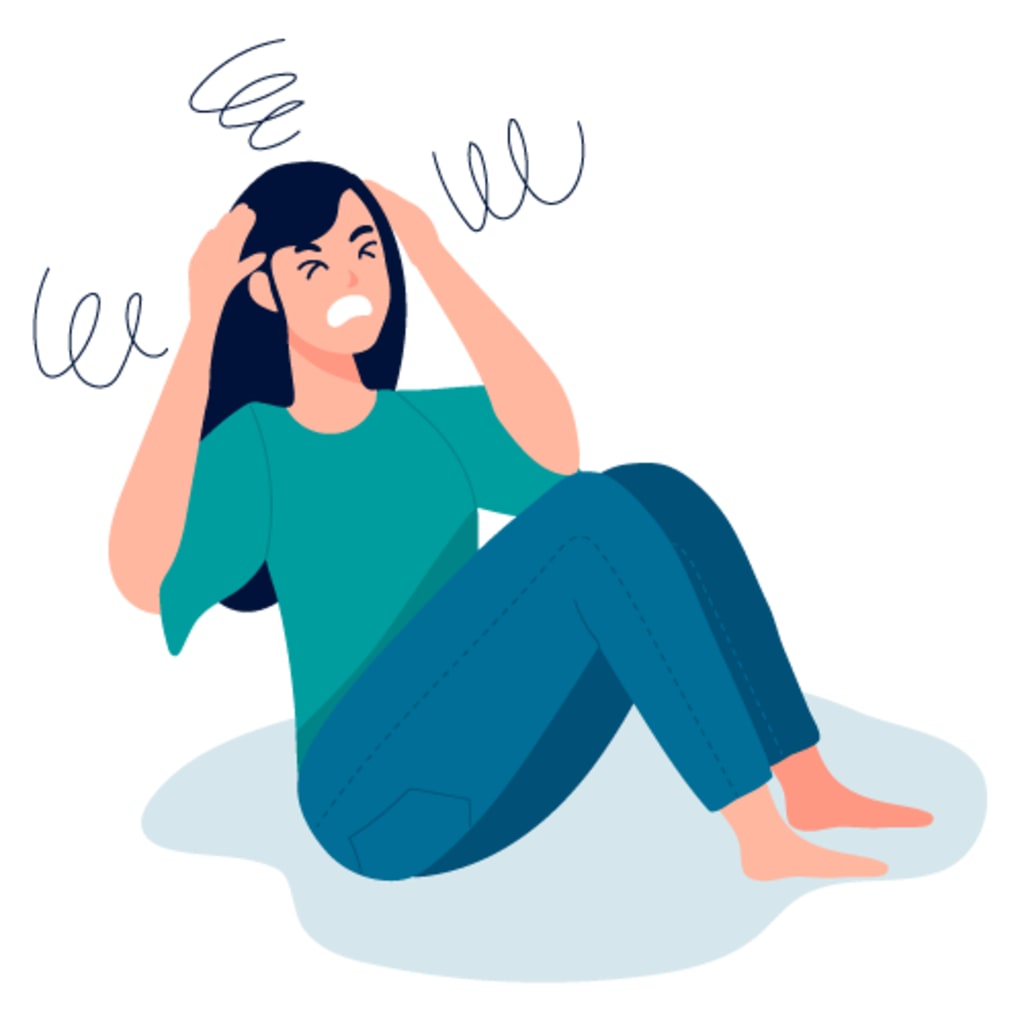Panic Disorder - psychiatry center | Aastha Hospital
mental care hospital in nagpur

Panic disorder is defined by a pattern of panic attacks interspersed with anxious symptoms. The patient may acquire a dread of closed spaces or being alone as time passes.
PANIC ATTACKS are episodes of severe anxiety that are accompanied by a sense of impending disaster. It might last anywhere from a few minutes to up to an hour.
Causes
Although the exact aetiology of panic episodes and panic disorder is unknown, the following factors may contribute:
• Genetics
• Significant anxiety
• Temperament prone to unpleasant emotions or more susceptible to stress.
• Changes in how different areas of your brain work
Symptoms
Panic attacks usually strike unexpectedly and without notice. They can happen while you're driving, shopping at the mall, sleeping, or in the middle of a business meeting. You may experience panic episodes once in a while or on a regular basis.
Recurrent panic attacks cause anticipatory anxiety, in which the patient begins to wonder:
• What will happen if I have another panic attack?
• Who will come to my aid?
• What will happen to me if no one is there?
• Is it true that I'm going to die?
• What shall I do?
• What will happen to my family if I die?
• As a result of this way of thinking, the patient avoids going out alone or in confined settings.
As a result, there is a great deal of subjective distress, as well as job and interpersonal impairment.
Patient develops depression over time.
Panic attacks come in a variety of forms. Some patients may have a few clusters of symptoms, while others may have a variety of symptoms. Within minutes, the symptoms frequently reach their peak.
Some of the following indications or symptoms are common in panic attacks:
• a feeling of imminent catastrophe or peril
• Sweating \sChills
• Cramping in the stomach
• Dizziness, lightheadedness, or faintness are all symptoms of dizziness.
• The fear of losing control or dying
• Shaking or trembling
• Flashes of heat
• Numbness or tingling sensation in the chest
• Heart pumping at a breakneck pace
• Tightness in your throat or shortness of breath
• Nausea \sHeadache
• Unreality or detached feeling
LOSS OF CONTROL AND FEELING OF DOOM ARE CHARACTERISTIC FEATURES.
Patients seek medical attention on a regular basis for a variety of reasons, including health problems and other medical disorders. Unfortunately, after all of the testing, the patient is told that everything is fine and that there is nothing to worry about.
PANIC DISORDER'S SECONDARY PROBLEM
After a period of time, the patient develops agoraphobia and depression. Alcohol is sometimes used to help people deal with their nervousness. Suicidal ideation is very common.
MEDICATION FOR PANSION DISORDER:
Doctors may prescribe a variety of drugs to help with the treatment of panic disorder. SSRIs, benzodiazepines, and beta blockers aid in the recovery of patients.
Psychotherapy:
often known as talk therapy, is an effective alternative or supplement to traditional treatment for panic attacks and panic disorder. Psychotherapy can assist you in gaining a better understanding of panic attacks and panic disorder, as well as learning how to cope with them.
Cognitive behavioural therapy is a type of psychotherapy that can help you learn from your own experiences that panic episodes are not dangerous..
There are four distinct types of panic disorders.
According to a clinical history and concomitant neurotic or depressed symptoms, the authors attempted to define panic disorders into four kinds. The following are the characteristics of each type:
Type I: a single panic attack is the only symptom;
Type II: only panic attacks occur frequently without any accompanying neurotic or depressive symptoms;
Type III: a recurrence of panic attacks and the gradual development of neurotic symptoms such as anticipatory anxiety, generalised anxiety, agoraphobia, or hypochondriasis;
Type IV: a recurrence of panic attacks and the gradual development of neurotic symptoms such as anticipatory anxiety, generalised anxiety, ago Depressive symptoms emerge as a result of recurrent panic attacks in type IV.
There are three subtypes within Type IV.
Type IV-1: Depressive symptoms arise as a result of panic attacks, and serious depression develops later alongside panic disorder.
Type IV-2: panic disorder morphed into serious depression over time.
Type IV-3. Panic episodes and depressive symptoms are found separately in
Type III and IV-1 are the most common forms, and they appear to be a core group of panic disorder. The underlying psychosis is examined as well as the specific cases of each category.
For more information kindly visit on Aasthaa Comprehensive Psychiatric Care Unit
About the Creator
Aastha Hospital
Aasthaa Comprehensive Psychiatric Care Centre established in the year 2010 has grown to be one of the distinguished Psychiatric rehabilitation care center in Central India today.
Enjoyed the story? Support the Creator.
Subscribe for free to receive all their stories in your feed. You could also pledge your support or give them a one-off tip, letting them know you appreciate their work.






Comments
There are no comments for this story
Be the first to respond and start the conversation.